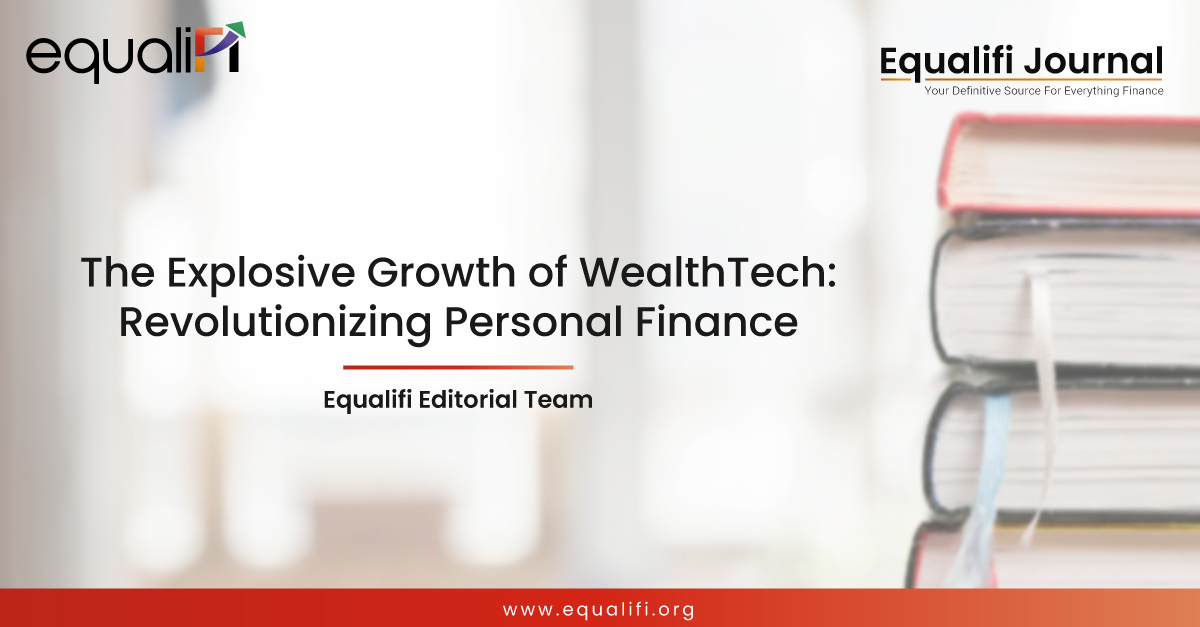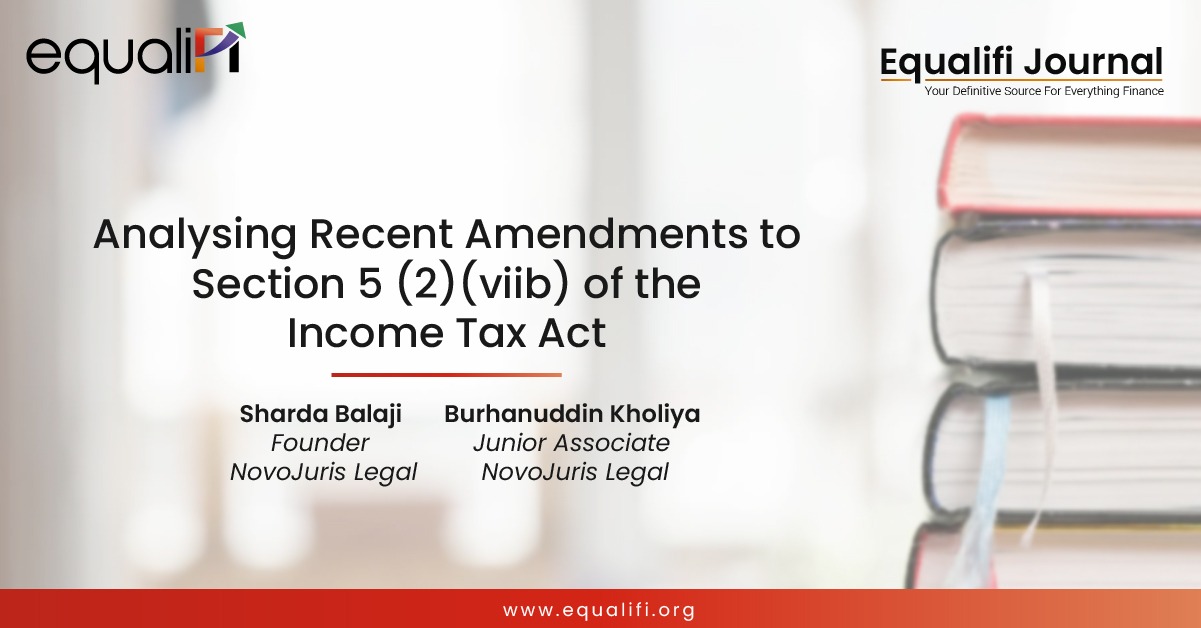WealthTech 2.0 – A solution that India’s working professionals need.
Posted on: December 25, 2022 | By: Sandeep Jethwani , Co-founder, Dezerv
Abstract:
India’s WealthTech industry is estimated to breach the 63 billion USD mark by FY25, up from 20 billion USD in FY20. The total number of demat accounts in India surged almost 2.5 times to 89.6 million over the last four years, with the addition of 34.5 million accounts in FY22 alone- and this trend is expected to continue, backed by increasing financial literacy & digitization. However, there’s a dearth of high-quality personalized advice- we have only 1 investment advisor per 76,510 investors, with availability of expertise highly concentrated in the ultra-wealthy (HNI/ UHNI) segment. This represents a huge gap in the market – serving India’s working professionals with holistic investment expertise and access to exclusive well-researched opportunities backed by technology, trust and quality. Some of the major issues faced by these smart, driven individuals when it comes to building a long-term investment portfolio are: paucity of time to actively manage their portfolio, information overload in terms of low-quality generic advice & one-size-fits-all approach, lack of access to diversified instruments and exclusive new age alternatives, as well as lack of transparency & trust due to misalignment of interest. I believe creating innovative, personalized solutions that India’s working professionals need will be the major theme that will define Wealthtech 2.0, aided by factors such as increase in awareness, rise in adoption of digital platforms among tech-savvy professionals with ever increasing disposable income.
Wealth + Tech, more than a summation
As Morgan Housel aptly puts in his book The Psychology of Money, “Wealth is what you don’t see”, it is no surprise that much of the wealth created by investors like Warren Buffet is something we don’t see. While the environment in which the likes of Warren Buffet quietly and diligently grew their wealth has changed, the pursuit to become wealthy remains the same.
It actually intrigues me to think about how a common man can build and manage his wealth with the tap of a finger on screen. The immense transformation in the wealth creation and investment management space has changed drastically over the years. What has led this transformation of the industry is WealthTech.
WealthTech is a subset of FinTech in which the focus is on managing and growing the wealth of investors. Technology is leveraged to maintain data sets, analyse and ensure a smooth investor experience. WealthTech companies either work on a B2B model where they develop solutions for banks, investment firms and wealth management firms or on a B2C model where they provide services directly to an end user. Its ecosystem includes marketplaces, investment tools, financial advisors, robo advisors, trading platforms and data analytics firms.
The rise and rise of WealthTech
As WealthTech as an industry is a part of the broader FinTech industry, its growth heavily depends on the expansion and widespread reach of Fintech. Where the FinTech industry is pegged to grow at a CAGR of 31% from 2021 to 2025, the number is 89% for WealthTech. WealthTech investments were 8.5 times in 2021 as compared with 2020. The number of new startups in this space grew from 16 to 29 in 2021. What’s more to see is the state of global wealthtech funding which grew 156% year on year from 5.7 billion USD in 2020 to 14.6 Billion USD in 2021.
India’s WealthTech industry is estimated to breach the 63 billion USD mark by FY25, up from 20 Billion USD in FY20.
The total number of demat accounts in India surged almost 2.5 times to 89.6 million over the last four years, with the addition of 34.5 million accounts in FY22 alone- and this trend is expected to continue, backed by increasing financial literacy & digitization.
However, there’s a dearth of high-quality personalised advice- we have only 1 investment advisor per 76,510 investors, with availability of expertise highly concentrated in the ultra-wealthy (HNI/ UHNI) segment. This represents a huge gap in the market – serving India’s working professionals with holistic investment expertise and access to exclusive well-researched opportunities backed by technology, trust and quality.
An entire demographic left un- attended – The woes of working professionals
A) Lack of Personalised Advice
There’s a dearth of high quality personalised advice. With availability of expertise highly concentrated in the ultra-wealthy segment. This results in people opting for the DIY (Do-It-Yourself) investing route which is heavily dependent on Google searches, social media influencers and hearsay in social circles. A major lacunae I have seen is the lack of research and an investment thesis.
A survey by a mutual fund platform found that 72% working professionals are unaware of how much to invest in order to do justice to their financial goals. Around 56% said that they do not possess adequate knowledge or advice to do so.
B) Paucity of Time
Working professionals are straddling their careers, family, social life, health and a host of other things that leave no time for even themselves. This leaves them very less room for investment decisions, let alone actively managing their portfolios. An average working professional is able to make only hearsay decisions coupled with some surface level searches on the internet.
C) Information overload
In an era of easily accessible and cheap internet, one can easily find loads of information on how and where to invest. People face two major problems due to excess information. First, the genuineness of the information is compromised and second, there can never be a one size fits all approach when it comes to personal finance.
Consider this- a person looking to invest in mutual funds, types “top 10 mutual funds to invest” on the search engine. Multiple links display their own version of top 10 mutual funds. Confused, (s)he still proceeds further with one link and after looking for the highest ROI, invests in one. What (s)he misses to consider is her/his risk appetite, investment horizon, underlying portfolio of the funds, asset allocation, history of fund manager and how these align with her/his financial goals.
D) Lack of proper Asset Allocation
Due to excessive information and multiple options, mindful portfolio construction takes a backseat. Additionally, exposure to overseas markets and new age instruments are least thought of.
I see many investors compulsively investing in a bunch of instruments without proper long term planning & attention to a diversified asset allocation over asset classes such as Equities, Debt, Gold and Alternatives. The lack of access to new age alternative investments deepens the problems.
Apart from those issues mentioned above, the lack of transparency and trust in advisors and wealth managers coupled with the inability to stay invested over the long term results in the interrupted compounding of wealth.
The Solution- WealthTech 2.0
That said, every problem has a solution. I believe not only in the power of compounding money but also in the power of compounding trust over a long period of time. This is why our solutions need to be transparent, innovative and effective enough such that professionals realise the value of investment advice and act accordingly. I believe the following are some of the aspects which will define the evolution of WealthTech as an industry:
1) Delivering expertise with an unmatched experience: A smooth digital onboarding procedure, active communication with investors in terms of consistent and timely updates about the investments current position and the next step of actions, as well as quick grievance redressal mechanisms are some experience enhancing factors. Personalised and well researched portfolios by experts will not only deliver great returns but also act as a service which can induce word of mouth promotion. Additionally, the costs to investors should be kept as low as possible and should be communicated as and when they change in order to build trust and help in client retention.
2) Focus on diversified asset allocation: While managing clients funds, special attention needs to be given to diversification across asset classes including traditional instruments like equities, fixed income, gold as well as alternatives. This way you can make portfolios resilient and less affected by market cycles. To give a practical example, Nifty 50 returns between Dec 2007 and Nov 2013 was 0% – zero return in 6 long years! But your dreams can’t wait just because one asset class is not moving.
3) Access to newer alternatives: As the human lifespan is increasing, we need to think of innovative ways of managing money to fight inflation. Investment in alternatives like Venture Capital & Private Equity, pre-IPO (Initial Public Offering) securities, Hedge Funds, Commodity linked instruments like Gold ETFs or Sovereign Gold Bonds, Real Estate Investment Trusts (REITs) or Infrastructure Investment Trusts (InvITs), Market Linked Debentures (MLDs), as well as the recent innovations like digital currencies should be made accessible to the working professionals. While a major deterrent for investors has been the high ticket size for alternative investments, the lack of expertise and guidance from experts is a major pain point.
4) Risk Management: The Indian market is not yet efficient enough to create portfolios only based on algorithms, and there is a need for strong risk management systems including an additional expert layer led by portfolio managers followed by due diligence and post-investment monitoring. This also includes understanding the changing market dynamics, regulatory guidelines, as well as perioding rebalancing and monitoring.
5)Tax Optimization: There are certain avenues available for efficient tax optimisation, which we should be aware of and use when applicable. All of us need high quality tax advice to make sure we’re using applicable deductions to maximise tax savings. From a tax saving perspective, long term investing into equity or debt is preferred over short term trading, as you can take the advantage of tax deductions on long term capital gains. With the rise of the startup ecosystem, it’s also important to understand taxation on ESOPs, and related regulations.
WealthTech – Unlimited potential
Our current WealthTech investors are around 4 million. This number is expected to triple itself by FY25. This growth will be aided by factors such as increase in awareness, rise in number of investors from tier-2 and tier-3 cities adopting digital platforms and also increase in tech savvy investors with ever increasing disposable incomes.
As per the provisional estimates of Annual National Income by National Statistical Office (NSO) of Ministry of Statistics and Programme Implementation (MOSPI), Net National Disposable Income has risen 19% in 2021-22 over 2020-21. And this trend is expected to continue.
To conclude, I believe creating innovative, personalised solutions that India’s working professionals need will be the major theme that will define Wealthtech 2.0, aided by factors such as increase in awareness, rise in adoption of digital platforms among tech-savvy professionals with ever increasing disposable income. When I think of a global picture in which assets over 60 trillion USD are in the WealthTech space, I feel very optimistic about India’s WealthTech growth story. Addressing the challenges faced by India’s working professionals with innovative solutions and a customer-first attitude will be a big part of this growth story.
References:
- https://www.moneychai.com/financial-advisor-fees-structure-cost-charges-in-india.html
- https://www.financialexpress.com/industry/sme/indian-wealth-tech-segment-to-be-60-billion-opportunity-by-fy25-redseer-report/2151226/
- https://www.business-standard.com/podcast/current-affairs/why-s-india-short-on-registered-investment-advisors-121121500084_1.html
- https://www.business-standard.com/article/markets/india-s-demat-account-tally-up-63-to-89-7-million-in-fy22-shows-data-122041401088_1.html#:~:text=The%20number%20of%20active%20dematerialised,shows%20data%20provided%20by%20depositories.
- https://economictimes.indiatimes.com/magazines/panache/weighing-down-57-per-cent-of-indian-employees-feel-overworked-as-digital-intensity-increases/articleshow/83395394.cms?from=mdr
- https://www.cbinsights.com/research/report/wealth-tech-trends-2021/
- https://www.moneymanagementindia.net/wp-content/uploads/Wealthtech-in-India.pptx.pdf
- https://www.livemint.com/money/personal-finance/investment-advisers-can-charge-fee-up-to-1-25-lakh-says-sebi-11600998606177.html
- https://www.investopedia.com/investing/dangers-over-diversifying-your-portfolio/
- https://economictimes.indiatimes.com/mf/mf-news/mfs-unlikely-to-get-a-raise-in-overseas-investment-cap/articleshow/92324835.cms
- https://www.researchandmarkets.com/reports/5319470/indian-wealthtech-a-60-bn-opportunity-by-fy25
- https://pib.gov.in/PressReleasePage.aspx?PRID=1829784
- https://amlegals.com/wealthtech-industry-in-india-unfolding-the-premier-account-of-fintech/#








